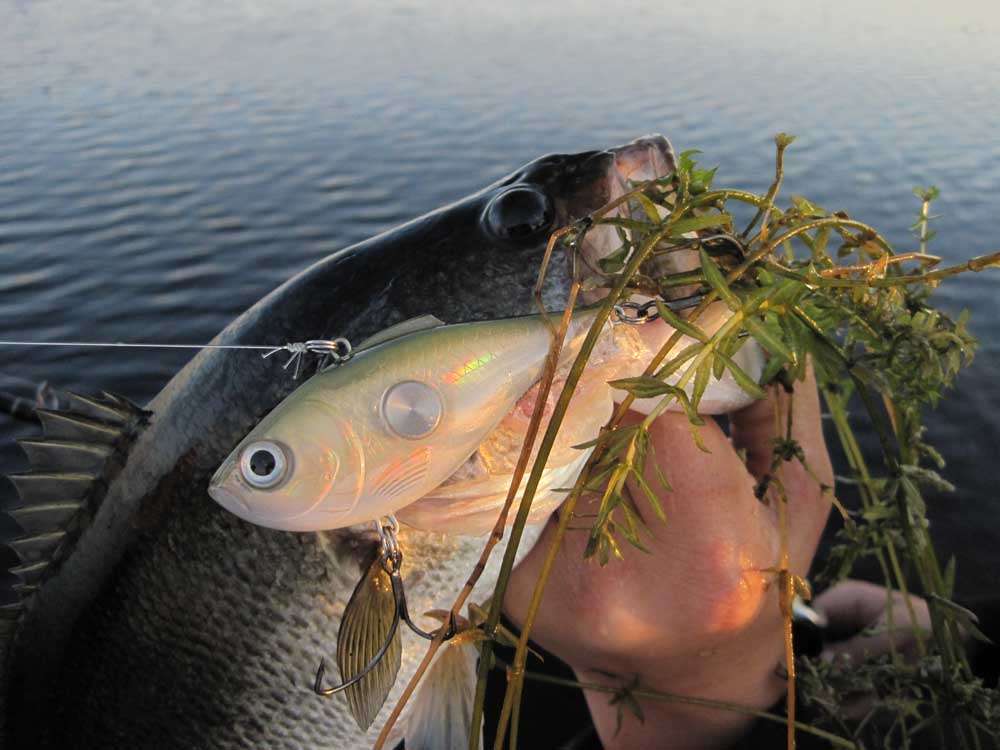
In tournament fishing, time is money. And any technique that can produce quality fish in a hurry offers a huge advantage — especially when you’re dealing with large bodies of water.
One technique that’s perfectly suited for such demands is the high-speed retrieve. Not only does this method cover water quickly, but with the right lures it can trigger even the most reluctant fish to strike.
All that’s needed is the proper situation and an angler with a need for speed.
The right tools
Obviously, not all lures are suitable for super-fast retrieves. Those that are include crankbaits, spinnerbaits, buzzbaits and certain soft plastics.
The requirements are simple: the lure must be able to maintain balance and direction at a high rate of speed. If it loses its track or balance on acceleration, then it’s not going to be very effective.
With today’s advances in technology, many lures run true at high speeds right out of the box — no tuning required. We also have the advantage of high-gear ratio reels, which are perfect for fast retrieves. Fewer turns of the reel handle will reduce fatigue, and that’s huge when you consider the amount of effort involved with constant high-speed winding over the course of a day — or, in the case of tournament anglers, multiple days.
While faster reels and truer running lures may provide the proper tools, an angler must still be able to recognize the right situations for applying them. Here are a few scenarios that might help.
Bass relating to shallow vegetation, flooded brush or riprap banks can provide the perfect setup. Depending on the prevailing conditions, one of several lure types could apply: If the water is reasonably warm (above 60 degrees) and the skies are overcast, a spinnerbait or buzzbait might be the right choice. But if wind is blowing directly into the area, that could eliminate the buzzbait and significantly improve your odds with the spinnerbait.
Cooler temperatures or bright skies might require a deeper running lure, like a crankbait — billed or lipless. And if you’re dealing with cover that’s too thick for hard baits, then a fast moving soft plastic might be the best choice.

Keep in mind, certain crankbaits can be plowed through brush, standing grass or lily pad stems at high rates of speed. Most often, the lure will deflect off the cover rather than becoming snagged. And it’s this intermittent contact that drives fish crazy. In fact, most strikes will occur just as the lure breaks free, in a sudden burst of speed.
The same is true when a fast moving lure deflects off a stump or cypress knee. Fish can’t stand it. Simply by impulse, they’re forced to react. And it seems the faster the lure is moving, the more forceful the strike.
Buzzing up big ones
Years ago, while fishing in a B.A.S.S. event on the Potomac River, I was getting lots of hits on a buzzbait. The bass were holding in patchy milfoil on a shallow flat. As the tide got higher, the better fish started missing the bait.
First, I tried slowing the retrieve, but that didn’t help. Then I tried follow-up lures, and those didn’t work either. I even tried switching styles and brands of buzzbaits, but the fish would only react to the buzzbait I started with — they just wouldn’t fully commit to it.
Finally, I got a break.

After giving up on a lengthy cast, I was racing the lure in to make another presentation when, right at the boat, just before pulling the buzzer out of the water, a 6-pounder crushed it. After I got the fish in, I could see the lure was buried in its throat. That’s when I figured it out!
The rest of the day, I burned that buzzbait until the blade finally wore out. It was one of my best ever topwater days in a tournament, and the lure I used was a clacker-style buzzer called the HeadBanger (made by Hildebrandt).
The faster I wound that bait, the better the fish ate it.
Like most anglers, I would have continued to chunk and wind at the same pace, hoping for an eventual hook-up. But because I got a break and realized what had occurred, I was able to turn things around.
Crankbaits are no different. I’ve had some incredible days burning crankbaits through rock, stranding grass, stumps and laydown trees. And it seems the faster the retrieve speed, the better my hook-up percentage. For whatever reason, bass will sometimes react more aggressively when a lure passes through the strike zone at warp speed. And that includes all species of bass.
High rate of return
Probably the most overlooked aspect of the high-speed retrieve is its effectiveness on heavily fished bodies of water. With increased pressure on our fisheries, bass everywhere are becoming conditioned to standard lure presentations.
Realizing this, many anglers downsize their tackle and slow the presentation. And that’s often the right approach. But before falling in line with the others, I suggest you try implementing a radical, high-speed approach. In doing so, you may be able to force those same fish to react. And if it works, the amount of water you can cover is limitless.
All it takes is the right tackle, the proper situation and some perseverance to realize the advantages of a high-speed retrieve. It may be the one angling approach where haste won’t equal waste! See it in action right here.





